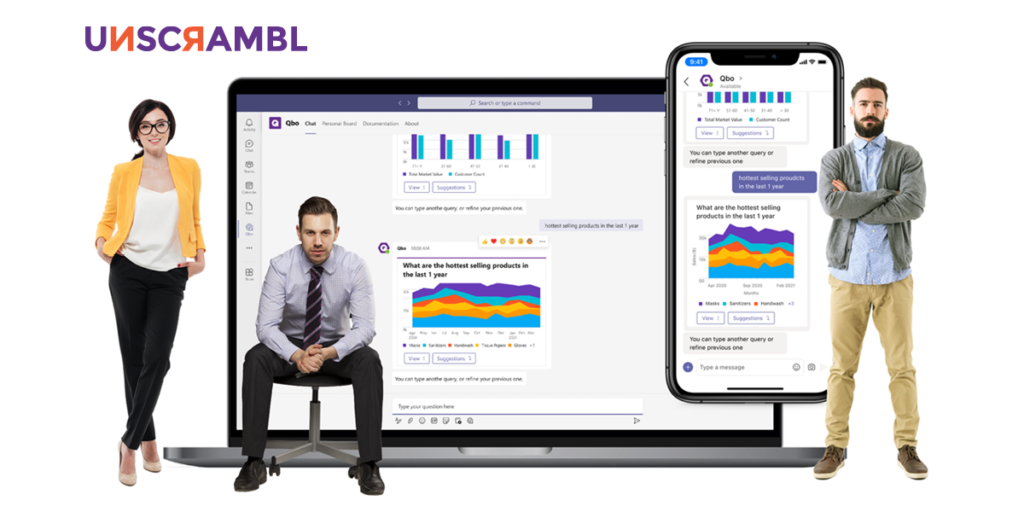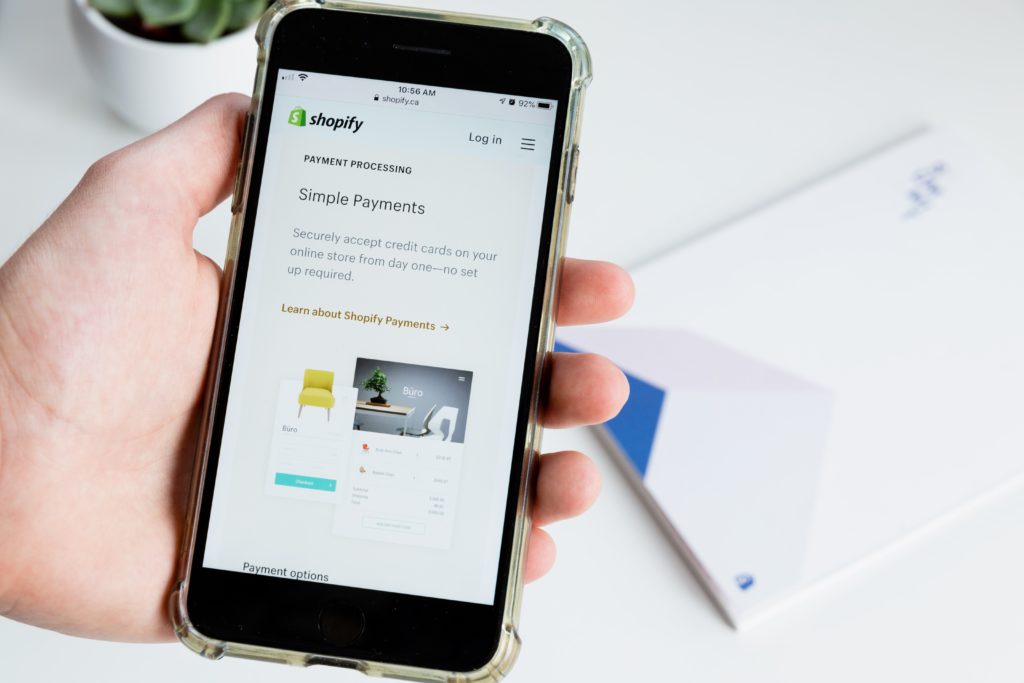 7 Minutes
7 Minutes

Data Monetization: The Beginner’s Guide To Getting Started
Every company, big or small, generates data. From the information communicated by IoT devices to revenue numbers and customer feedback, the amount of data being generated is enormous and growing.
In fact, according to IDC, it is projected that there will be over 55.7 billion connected devices by 2025 with 73.1 ZB of data being generated.
Data is fast becoming abundant for businesses as we enter into the era of IoT, but how many companies are effectively using their data to transform and accelerate change in their organizations?
While corporations like Facebook dominate the headlines when it comes to data monetization, gleaning value and unlocking income streams from data doesn’t have to be reserved only for the big boys.
A survey done by McKinsey found that an increasing number of companies are utilizing data and analytics to drive growth by adding new services to their existing products and developing new business models. However, only 17% of companies have established data monetization initiatives – the opportunity today is big and the rewards even bigger.
With businesses entering a world that has forever been changed by the COVID-19 pandemic, where consumer behavior has changed, companies need to begin to monetize their data effectively to drive real business revenue both internally and externally.
In this article, we will be going through the types of data monetization available and how you can get started with it and drive real economic benefits for your organization through data.
What Is Data Monetization, Its Benefits & The 2 Types You Must Know
Gartner defines data monetization as the process of utilizing data to obtain quantifiable economic benefits.
There are two main categories of data monetization: direct and indirect monetization.
Direct monetization is the most easily understood and involves a transaction of sorts. Data, in this case, is directly a revenue stream, such as a SaaS service or curated data access. Customers pay directly to access and harness the data for their own usage.
With direct data monetization companies will be able to unlock new revenue streams to existing and new customers for further business growth.
Indirect data monetization, however, revolves around using the insights from the data to improve the internal processes and operations of an organization to make it more efficient and profitable.
These include:
- Identifying inefficiencies in your supply chains
- Mitigating security and compliance risks
- Enhancing customer experiences
- Optimizing marketing campaigns for greater ROI
- Improving your customer service
- Uncovering and capitalizing on market trends
- Maximizing your operational productivity and efficiency
Indirect data monetization might be less measurable and the financial gain might be less immediate compared to direct monetization, but it is a necessary component of a company looking to outperform and out-innovate the competition for the long-term.
Direct Monetization Examples:
SEMrush is one example of a company that does direct data monetization. As an SEO SaaS tool, SEMrush is built on selling access to valuable curated data such as keywords, website domain statistics and traffic analytics.
Equifax is another company that directly sells consumer data and insights, such as customer purchasing behavior, to companies that include banks and insurance firms.
Indirect Monetization Examples:
Netflix is an example of successful indirect data monetization.
Through the power of business intelligence, Netflix harnessed their user data to conduct a predictive analysis of the types of shows their customers would love to watch. This helped them to consistently produce blockbuster hit series such as House of Cards to better entertain their audience.
As one of Singapore’s oldest banks, DBS utilizes big data to indirectly monetize their customer data.
Through harnessing their customer data, they are able to provide intelligent banking capabilities that include providing stock recommendations and notifications on favorable foreign exchange rates – improving their customer & brand experience.

Begin Your Data Monetization Journey – A 6 Step Guide
1. Enable Access & Storage Scalability For Your Data
What types of data do you collect and store? Is your data ready to be utilized? Is your data stored in a structured or unstructured manner?
These are some of the key questions you need to ask and address at the start of your data monetization roadmap. By understanding the process flow of your data, you will be better able to work out the cost of harnessing the data to better ensure profitability.
A good start is to utilize a data warehouse to enable easy access and scalability for your data.
With the right data warehouse, such as Snowflake, organizations will be able to accomplish two critical precursors to effective data monetization:
- Non-disruptive & independent data storage scaling: Allowing data to be stored and utilized without any disruption or costs on other capabilities such as computing needs.
- Enhances the utility of your data analytics solution: Modern data warehouses have the ability and functionality to dynamically transform your data while maintaining its quality once you upload it. This helps your analytics solution to better access and analyze them for more accurate insights.
2. Utilize The Right Business Intelligence Tool
While data is widely hailed as the new oil of today’s digital economy, it needs to be in a useful form to be utilized either for internal or external data monetization.
This is where having the right business intelligence tool is so critical to make the journey smoother, especially when it comes to indirect data monetization.
With a business intelligence tool powered by conversational analytics, users will be able to ask questions directly to their data like how they would in a normal conversation and obtain insights on demand.
This allows for true data democratization throughout an organization and also unleashes a spirit of collaboration that will allow data monetization ideas to flow.
The right business intelligence tool will allow your organization to obtain real-time insights from your data, allowing your teams to swiftly identify opportunities and capitalize on them as well as better optimize your processes and operations.
3. Identify Key Internal Areas In Your Business That Needs Optimizing
When it comes to getting started with data monetization, it is always better to start internally and score quick wins, than to directly monetize your data by selling it outright.
For many organizations, optimizing the processes and operations is a good start to getting management buy-in support. Whether you are running a retail business, a manufacturing plant or a financial brokerage, there are areas in your business that can be improved.
Here are some good questions to ask yourself:
- Are there gaps in my customer acquisition processes?
- Are my equipment working to its full potential?
- Have I encountered any security or business risks lately?
- Am I losing more customers than usual?
- Are my customers consistently giving me good feedback and reviews?
- Is my customer cost-per-acquisition going up?
By starting internally, you and your teams will be able to effectively enjoy an ROI on your data monetization effort, albeit indirectly, instead of jumping headfirst into direct monetization which requires creativity, capital and manpower to identify, build and launch something new.
4. Enhance Your Existing Offerings & Products With Data
While optimizing your processes is a good start, the next step is to actively utilize the data to improve your existing products and services.
As we live in a world that increasingly demands transparency, companies can capitalize on this by giving your customers insight into their own purchasing behaviors as well as key information revolving around the products and services they are considering.
For example, if you are a retail store selling clothing, you can harness the power of your data by showcasing key information to your customers such as:
- The discount level of the product
- How many reward points they can earn with a purchase
- How sustainable the product is
- How popular the product is with other customers
iSwitch, an electricity retailer in Singapore, allows its customers to review their electricity consumption trends and compare their usage to the national average. They do this by consolidating their customer data and presenting it meaningfully as a visualization in their mobile app.
The NBA is another great example of how to enhance your current offerings with data. The league intelligently integrated its data in their paid services – NBA League Pass & NBA TV to add more value to their customers.
This was done by adding interactive overlays to entertain fans with statistics of their favorite players, in-game highlights, quizzes and even betting odds for matchups. Allowing their fans and customers a more immersive and detailed experience utilizing their products.
5. Start Licensing Data & Insights To Customers
When it comes to direct monetization, licensing valuable data and insights is about the most direct way you can go without creating a whole new product or SaaS offering,
Licensing data allows your customers the rights to access and use it in exchange for a fee. However, this must be data that is valuable (or has a marketplace looking for it).
For the direct licensing of data, there will have to be some infrastructure set-up that will allow for the profitable licensing of data.
These include:
- The marketing of the licensing service
- Creation of APIs and data-access gateways
- Handling the licensing transactions
If you are new to this, you can consider leveraging existing data marketplaces such as Quandl which can help handle the three points above.
Another way to directly monetize your data is through insights that you can obtain from your business intelligence and analytics solution. This can be sold as highly targeted reports covering a subject in demand
One great example of how this is done is from Wood Mackenzie. As an analyst firm, they augment their research and consulting offerings by selling market reports on various industries such as commodities and chemicals.
Filled with rich insights and visualizations, their reports are a good example of how insights from data can be sold as a standalone product.
6. Utilize Your Data To Acquire Customers Through Content Marketing
While selling insights and data can bring in direct revenue, data monetization can also be done on a marketing level.
With companies increasingly acquiring clients through digital marketing, from Google Search to Facebook ads, you can also effectively utilize your data to drive traffic to your website.
This can be done by using your proprietary data to create valuable resources such as:
- Insightful data-rich infographics
- Impactful case studies
- Evidence-rich blog posts
- Original research articles
- Step-by-step ebook guides
Hubspot for example utilizes a wealth of data from their own internal teams, partnerships, and customers to create insightful ebook guides to help their readers (and new searchers) reach the goals that matter to them.
From proven sales email templates to their 2021 Sales Enablement Report filled with data and insights from over 500 experts, Hubspot uses data not just to enhance their product offerings but to also offer something valuable to spread their brand awareness and start building a relationship with their readers.

Get Started On Monetizing Your Data With Qbo
At Unscrambl, we believe that data is the fuel that will transform good organizations into great ones through the power of insights that help business leaders make better decisions.
We developed Qbo, a business intelligence tool powered by conversational analytics that truly unlocks the power of data democratization throughout an organization.
Users will be able to ask questions directly to their data, as they would in a normal conversation, and gain impactful insights within seconds.
Whether you decide to monetize your data directly or indirectly, insights are a critical component that you shouldn’t ignore.
Give Qbo a try today, embark on a free 14-day trial and accelerate towards your data monetization goals.


